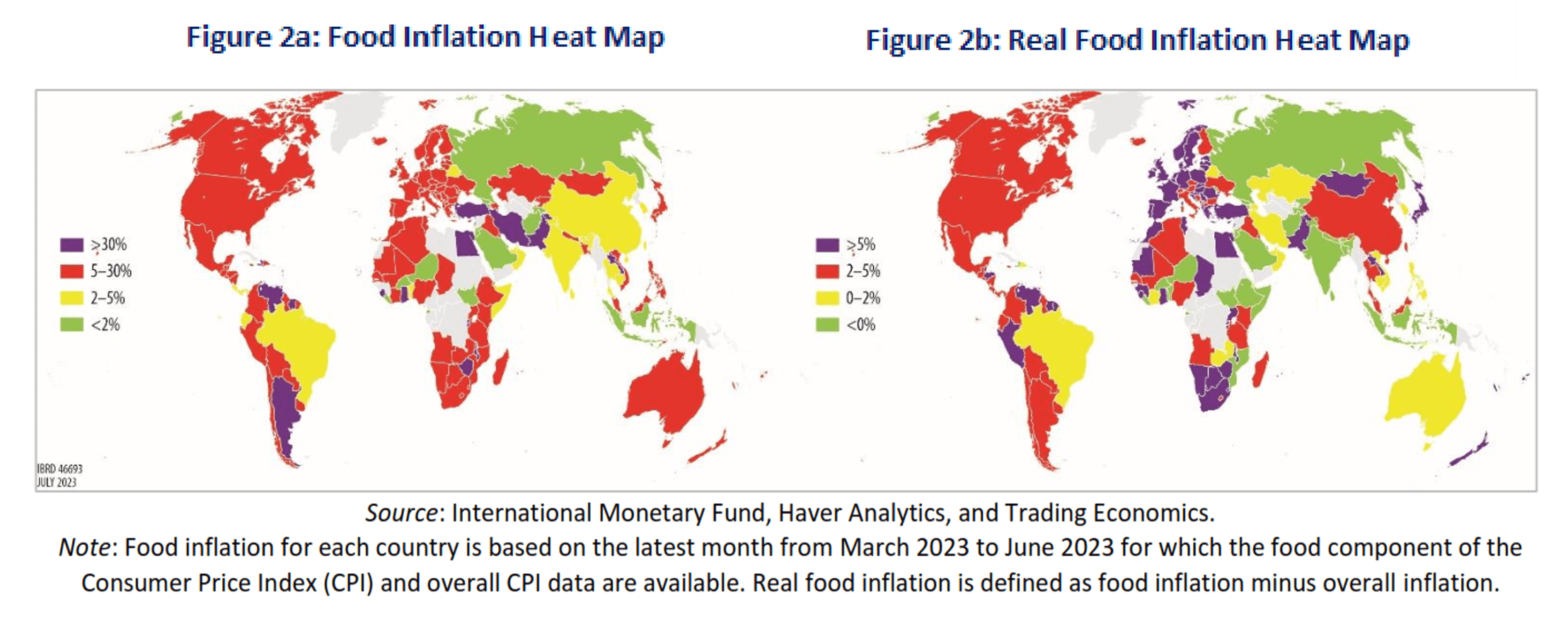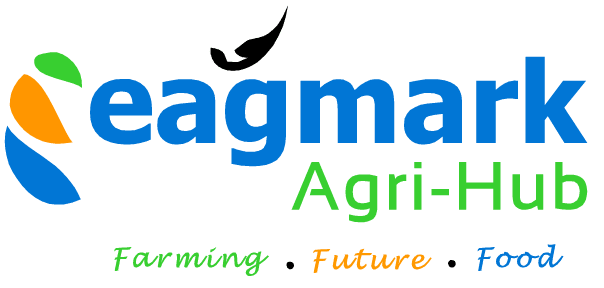Global Food Crisis Intensifies as High Food Price Inflation Hits African Nations – World Bank

In the face of a deepening global food crisis, domestic food price inflation remains stubbornly high around the world, posing significant challenges for low- and middle-income countries. According to recent World Bank Food Security Update from February to May 2023, 61.1% of low-income countries, 79.1% of lower-middle-income countries, and 70% of upper-middle-income countries are experiencing food price inflation greater than 5%, with several facing double-digit inflation.
High-income countries are not immune to the effects, with 78.9% experiencing rising food prices. The situation is particularly dire in Africa, alongside regions like North America, Latin America, South Asia, Europe, and Central Asia. This alarming trend has raised concerns about the stability of global food security.

The most recent agriculture market statistics paint a mixed picture. The agricultural and cereal price indexes have fallen by 4% and 12%, respectively, with maize prices falling by 21% compared to two weeks ago. Meanwhile, wheat prices have fallen by 3%, while rice prices have increased by 1% over the same time period. Maize and wheat prices are around 19% lower year on year, but rice prices are 16% higher. However, maize prices are down 4% from January 2021, while wheat and rice prices are up 1% and 3%, respectively.
The Agricultural Market Information System (AMIS) Market Monitor for July 2023 has expressed concern about geopolitical tensions that endanger the Black Sea Grain Initiative. Following the tragic collapse of the Nova Kakhovka dam in southern Ukraine, massive flooding has threatened drinking water supplies and hampered irrigation, affecting over 40,000 hectares of land as well as multiple cities and villages. The scenario is jeopardizing Ukraine’s agricultural productivity and might lead to the agreement’s termination, potentially limiting Black Sea exports and harming world grain supply.
To compound matters, the newly released Organization for Economic Cooperation and Development-Food and Agriculture Organization (OECD-FAO) Agricultural Outlook 2023-2032 identifies the rise in agricultural input prices as a serious danger to global food security. Food prices are projected to rise more as fertilizer costs rise. According to the analysis, every 1% increase in fertilizer prices could result in a 0.2% increase in agricultural product prices. Crops that rely significantly on fertilizers are projected to suffer more than livestock goods, with chicken and pig being particularly vulnerable due to their need on compound feed.
You may also want to read: What the Rising Food Prices and Shortages Mean for Kenya’s Agricultural Sector
In response to the mounting global food crisis and trade restrictions imposed by various countries, the World Bank announced a commitment of up to $30 billion over 15 months, with $12 billion committed to new projects, in April 2022. The funding will be used to improve food and nutrition security as well as food system resilience, with a particular emphasis on Africa, one of the hardest-hit regions.
Several noteworthy projects have already been initiated by the World Bank in collaboration with affected African nations. These include:
- West Africa Food Systems Resilience Program: A $766 million initiative designed to increase preparedness against food insecurity and enhance the resilience of food systems in West Africa. The program leverages digital advisory services for agriculture and food crisis prevention, invests in regional food market integration and trade, and builds the adaptive capacity of agricultural system actors. Additional funding of $345 million is under preparation for Senegal, Sierra Leone, and Togo.
- Support for Chad, Ghana, and Sierra Leone: A $315 million loan to increase their preparedness against food insecurity and improve the resilience of their food systems.
- Emergency Food Security and Resilience Support Project for Egypt: A $500 million project to ensure that poor and vulnerable households have continuous access to bread, strengthen the country’s resilience to food crises, and support reforms that improve nutritional outcomes.
- Aid for Tunisia: A $130 million loan to mitigate the impact of the Ukraine war by financing vital soft wheat imports and providing emergency support for dairy production and smallholder farmers’ planting season.
- Food Systems Resilience Program for Eastern and Southern Africa: A $2.3 billion initiative aimed at enhancing food systems resilience, increasing agricultural production, and ensuring sustainable development of natural resources in the region.
In May, the World Bank Group and the G7 Presidency jointly established the Global Alliance for Food Security to address the unfolding global hunger crisis. The alliance has developed a publicly accessible Global Food and Nutrition Security Dashboard, offering timely information for global and local decision-makers to facilitate better coordination of policy and financial responses to the food crisis.
As the global food crisis deepens, concerted efforts by international organizations and nations alike are essential to mitigate its impact. The World Bank’s commitment to supporting food and nutrition security in Africa and beyond demonstrates the urgency with which stakeholders must act to safeguard the well-being of millions and secure the future of food systems worldwide.



